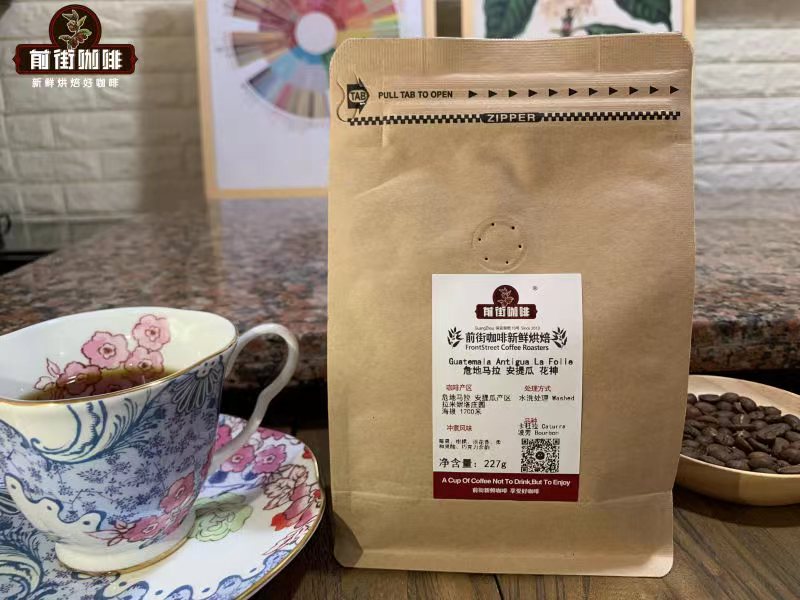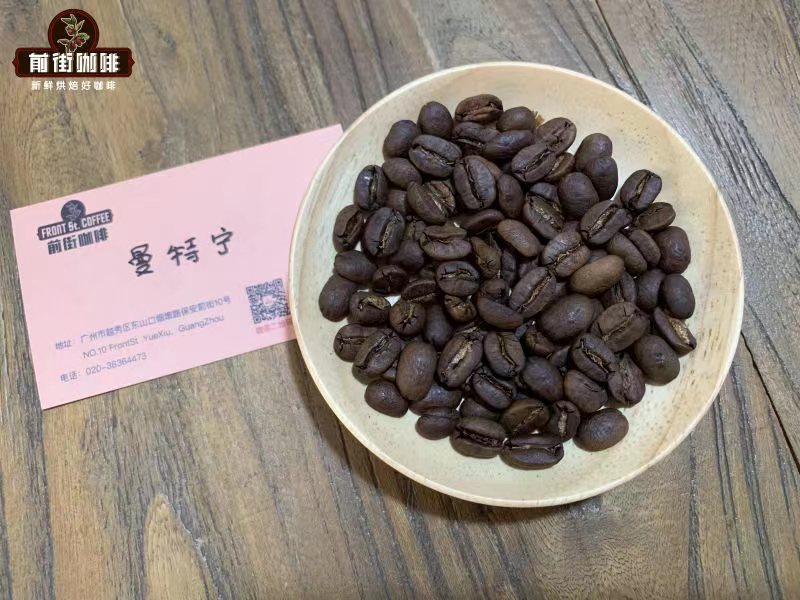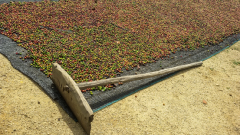Where does the aroma of coffee come from? why does fine coffee smell better than drink?
Most of the time, when you brew coffee and test coffee in the Qianjie coffee factory, you will feel the fragrance of flowers and fruits in the air, or the smell of caramel, sugar, honey and so on. When a hot cup of coffee enters the mouth, it doesn't have the wonderful feeling it smells like, or to put it bluntly, it's not as mellow as it smells.
To solve this mystery, you have to understand the flavor and smell of coffee. Some sour and sweet tastes are water-soluble and volatile, and you can smell them and drink them.

Coffee flavor
Coffee flavor < Flavors > consists of volatile aroma < Gases >, water soluble taste < Tastes > and taste < Mouthfeel >.
The volatile aroma includes dry and wet fragrance, as well as the sense of smell before and after the nose.
The water-soluble taste includes sweet, sour, bitter and salty taste and oral taste.
The taste includes smoothness and astringency as well as oral touch, which is the result of the interaction of different proportions of sweet, sour, bitter and salty.
Smells good.
It smells better than it tastes, actually because coffee beans are roasted and mixed with volatile ingredients such as esters, aldehydes or organic acids through the "Mena reaction".
Coffee is blessed with a wide variety of complex chemicals, in addition to the above-mentioned compounds, there are other organic acids, inorganic acids, plant bases and so on.
When grinding or brewing, these volatile components or organic acids are gasified to give us a pleasant aroma of coffee.
Most of the more than 850 aromatic substances in coffee are only volatile, so they can only be identified by the sense of smell, and the other part has the bidirectional nature of volatilization and water solubility, so it can be felt by smell and taste, but coffee is the least pure water-soluble aromatic substances. it depends on taste buds to identify.
Most of the aromatic substances in coffee are volatile, so many people find coffee more enjoyable to smell than to drink.
The sense of smell before and after the nose
The general sensory detection flavor of our human body is: smell > taste > taste.
The breadth and accuracy of olfactory recognition is greater than that of taste and taste, because smell is the only sense with two-way function. The nose can smell the smell of the external world, that is, the "prenasal smell" (Orthonasal olfactory), but the mouth can also "smell" the smell of food eaten into the mouth, that is, the "post-nasal smell" (Retronasal olfactory).
Coffee has volatile aroma of caramel, cream, sour, flower, fruit, herb, nut, grain, resin, wine, spice, coke, soil, firewood and potion. The gasification components are all presented by the sense of smell in front of the nose and in the back of the nose.

Some sweet and sour flavor molecules are volatile and water-soluble, so the sense of smell and taste can be enjoyed; but the unpleasant bitter and salty taste is water-soluble, not volatile, and can only be felt by the sense of taste, so many people will think the coffee smells good.
However, studies have also pointed out that another reason for the change in coffee taste is that 300 of the 631 chemicals that make up coffee flavor are killed by saliva, causing it to change before we swallow.
In Mr. Han Huaizong's Coffee Science, he explained that coffee smells better than it tastes better because it is related to the sense of smell in front of and behind the nose, which can distinguish thousands of different aromas, but the taste can only feel sour, sweet, bitter, salty and fresh. five water-soluble flavors.
Other studies have shown that chocolate and lavender are two known flavors that feel the same when entering and emitting from the nose.
Important Notice :
前街咖啡 FrontStreet Coffee has moved to new addredd:
FrontStreet Coffee Address: 315,Donghua East Road,GuangZhou
Tel:020 38364473
- Prev

Where does the sugar in sun-dried coffee beans come from? why are sun-dried beans sweeter than washed coffee beans?
The same kind of coffee beans, different treatment, the flavor and taste will be different, and the sun and water washing, if it is the same bean, the sun coffee beans will be sweeter than water washed beans, the taste will be more rich. The characteristic of beans in the sun is that the beans are naturally dried in the pulp, so the climate affects the quality of the beans. The color of sun-dried beans is yellow, and the bean body is prone to lack of horns.
- Next

The difference between charcoal coffee and black coffee does black coffee include charcoal coffee?
When it comes to charcoal-roasted coffee, it has low acidity, strong bitterness and sweetness, and a strong fragrant and mellow taste. Charcoal roasted coffee, in fact, is a kind of black coffee, black coffee brings the original feeling of tasting coffee, a collection of coffee sweet, sour and bitter characteristics. To put it bluntly, charcoal coffee is one of the black coffee in black coffee. Charcoal coffee is black coffee, while black coffee has charcoal.
Related
- What brand of black coffee is the most authentic and delicious? what are the characteristics of the flavor of the authentic Rose Summer Black Coffee?
- Introduction to the principle and characteristics of the correct use of mocha pot A detailed course of mocha pot brewing coffee is described in five steps.
- Which is better, decaf or regular coffee? how is decaf made?
- How much is a bag of four cat coffee?
- How about four Cat Coffee or Nestle Coffee? why is it a cheap scam?
- Which is better, Yunnan four Cats Coffee or Nestle Coffee? How about cat coffee? is it a fake scam? why is it so cheap?
- How about Cat Coffee? what grade is a hoax? which instant coffee tastes better, four Cat Coffee, Nestle Coffee or G7 coffee?
- Process flow chart of coffee making-Starbucks coffee making process what coffee tastes good at Starbucks
- The top ten best coffee beans in the world Rose summer coffee or Tanzanian coffee tastes good
- Yunnan four cat coffee is good to drink?_four cat coffee is a big brand? four cat blue mountain coffee is fake?

